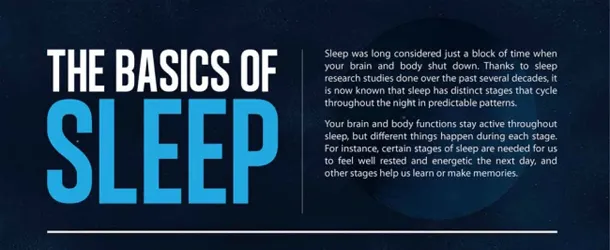
- Share on Facebook1
- Share on Pinterest
- Share on Twitter
Society has long remained under the impression that sleep is a state of mental “shut-down,” and even a total pause in brain activity. This theory couldn’t be more false. On the contrary, sleep induces very heavy brain activity, although brain waves produced during sleep are much different than those present during one’s waking state… [Infographic Below]
The first stage of sleep lasts between five and ten minutes and is responsible for the production of high amplitude theta brain waves. Phase one is a transitional phase into sleep phase two, where light sleep occurs. During phase two, the brain produces sleep spindles and heart rate and body temperature decrease. After about 20 minutes of light sleep, the brain produces deep brainwaves known as delta waves. This transitional third phase puts the sleeper into a deep sleep, which lasts for about 30 minutes and has been known to result in sleepwalking and bed-wetting.
Afterwards, brain activity cycles back to phases three and two before entering into REM sleep. REM, or rapid eye movement, is the phase where dreaming occurs and completes the sleep cycle. Humans undergo four to five of these “sleep cycles” per night and rely on them to feel rested in the morning.
Without sleep, society would be listless, groggy, and suffer mental and emotional lapses. To obtain adequate sleep, practice good “sleep hygiene.” This can be done by maintaining a consistent sleep schedule, avoiding heavy meals and beverages before bed, getting enough sunlight and exercise, and relaxing properly before calling it a night. The result will be better sleep, and ultimately, better health.
Love this infographic? View the original and get the embed code here
– The Alternative Daily
- Share on Facebook1
- Share on Pinterest
- Share on Twitter


